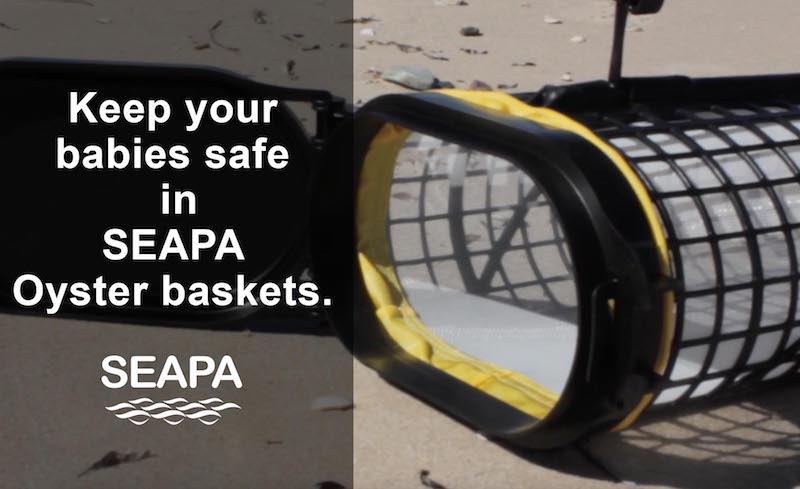
Spat collection was highest in March, June and July in each of 2015, 20. Regardless of tile orientation, spat numbers were significantly higher on the rough side (129.07 ± 9.3 m−2) than on the smooth side (66.95 ± 7.0 m−2). This will guide farmers when to deploy cultches to maximise spat harvest. This study determined the seasonality of Magallana bilineata spat settlement in a natural oyster bed and established surface texture preference of competent larvae by comparing the numbers of spat settling on the smooth and rough surfaces of ceramic tiles over a period of 31 months. Uma aplicação importante da presente pesquisa seria no aperfeiçoamento do cultivo de ostras com base na coleta de sementes do ambiente natural. O setor médio da baía mostrou a maior densidade de recrutas ao longo do período estudado. Os resultados mostraram um aumento no número de indivíduos fixados entre os meses de outubro e março, com sucessivos picos durante este período. Devido à impossibilidade de diferir os recrutas das duas espécies nativas de ostras a partir da morfologia da concha, as sementes das duas espécies foram contadas em conjunto de ambos os lados das placas, para determinar o número de indivíduos fixados. brasiliana) foram estudados na baía de Guaratuba (Paraná, Brasil) através da análise de coletores artificiais em três locais: ponto I (entrada da baía), ponto II (parque de cultivo) e ponto III (setor médio da baía) e a variação quinzenal entre junho/2003 a junho/2004. Neste trabalho o recrutamento das larvas de ostras do gênero Crassostrea (C. No estágio Pediveliger as larvas estão próxima da metamorfose e assentamento no substrato consolidado. O desenvolvimento das larvas de ostras do gênero Crassostrea é caracterizado em fases larvais: larva D, umbo e Pediveliger. Recrutamento de ostras do gênero Crassostrea (Bivalvia, Ostreidae) na baía de Guaratuba, PR, Brasil.

An important application of the present research would be in the improvement of oyster cultivation based in seed collection from natural environment. The medium sector of the bay showed the larger density of recruits along the studied period. The results showed an increase in the number of settled individuals between October and March with successive peaks during this period. Due to the impossibility to differentiate the recruits of the two oysters' species by the shell morphology, the oyster's spats of the two species were counted jointly on both sides of the plates, to determine the number of settled individuals. brasiliana) was studied in Guaratuba Bay (Paraná-Brazil) through analysis of artificial collectors placed in three points: Point I (bay´s entrance), Point II (cultivation park) and Point III (medium sector of the bay) and changed biweekly from June/2003 to June/2004. In this work, recruitment of oysters' larvae of genus Crassostrea (C. In Pediveliger the larvae are near settlement and metamorphosis in hard substratum. Larval development of Crassostrea is characterized by three larval phases: larva D, Umbo and Pediveliger. The number of oyster spat was positively correlated with the salinity (ρs= 0.331 p < 0.05) and water temperature (ρs= 0.48 p < 0.05), revealing that areas with higher salinities and summer months were better for spat collection. Spat settlement was significantly higher on oyster shell, tile and tire collectors, mainly at points with higher salinities, such as Praia do Coqueiro in Anchieta and on Meio and Cabrito Islands in Piúma (Kruskal-Wallis: H= 10.01 3 d.f. The number of spat recruited on each collector and their shell lengths were registered bimonthly, as well as the physico-chemical-trophic parameters of the water: salinity, temperature, dissolved oxygen, particulate organic matter and chlorophyll a, which were correlated (by Spearman's correlation) with the number of spat recruited. The collectors were made of: 1- oyster shells, 2- PET bottles, 3- car tires and 4- tiles, all of them suspended by ropes and tied to roots of Rhizophora mangle or mussel long-lines. at five sites in the Benevente river estuary, Anchieta District and on two islands in Piúma District, both in Espírito Santo State. This paper evaluated the effectiveness of four types of oyster spat collectors, made with recycled materials, in the recruitment of the mangrove oyster Crassostrea spp.


 0 kommentar(er)
0 kommentar(er)
